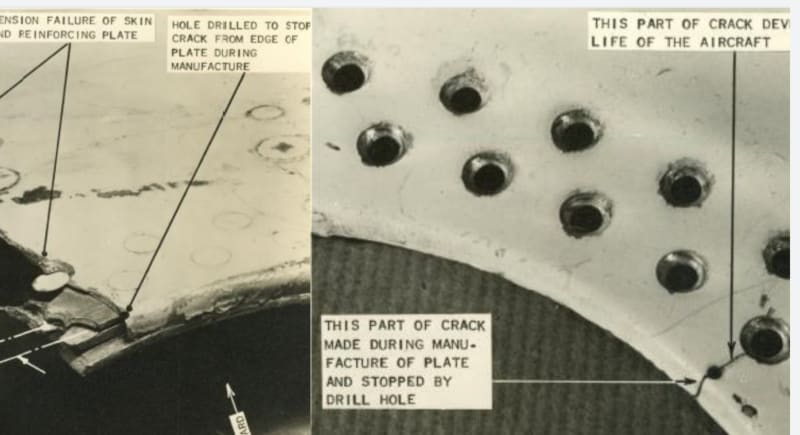I am trying to learn the specific design related issues with the de Havilland Comet. I have read the investigation report which spoke of:
1. Underestimation of stresses at the corners
2. Overloading the fatigue specimen before the fatigue test itself
3. Testing only the fwd fuse and effect of end restraints
etc
What I am interested however is the specific changes that were made to the design to make it airworthy again. Possible amends I could think of (based on my limited knowledge) were:
1. Reduction of general stress levels by making the skins thicker
2. Better materials in terms of crack resistance/growth (fracture toughness?)
3. Changing some of the cutout profiles to reduce the Kts.
4. Adding stiffners around windows to allowing stress away from the cutouts
But I was hoping for some definitive answers rather than guessing. An ideal answer would be one which compares the old and new design almost side by side. While a lot seems to written about what led to the accident, I couldn't find much by the way of specific design changes that were incorporated to make it airworthy again. Any pointers in that direction would be great! I will also welcome less than ideal answers .
.
1. Underestimation of stresses at the corners
2. Overloading the fatigue specimen before the fatigue test itself
3. Testing only the fwd fuse and effect of end restraints
etc
What I am interested however is the specific changes that were made to the design to make it airworthy again. Possible amends I could think of (based on my limited knowledge) were:
1. Reduction of general stress levels by making the skins thicker
2. Better materials in terms of crack resistance/growth (fracture toughness?)
3. Changing some of the cutout profiles to reduce the Kts.
4. Adding stiffners around windows to allowing stress away from the cutouts
But I was hoping for some definitive answers rather than guessing. An ideal answer would be one which compares the old and new design almost side by side. While a lot seems to written about what led to the accident, I couldn't find much by the way of specific design changes that were incorporated to make it airworthy again. Any pointers in that direction would be great! I will also welcome less than ideal answers

